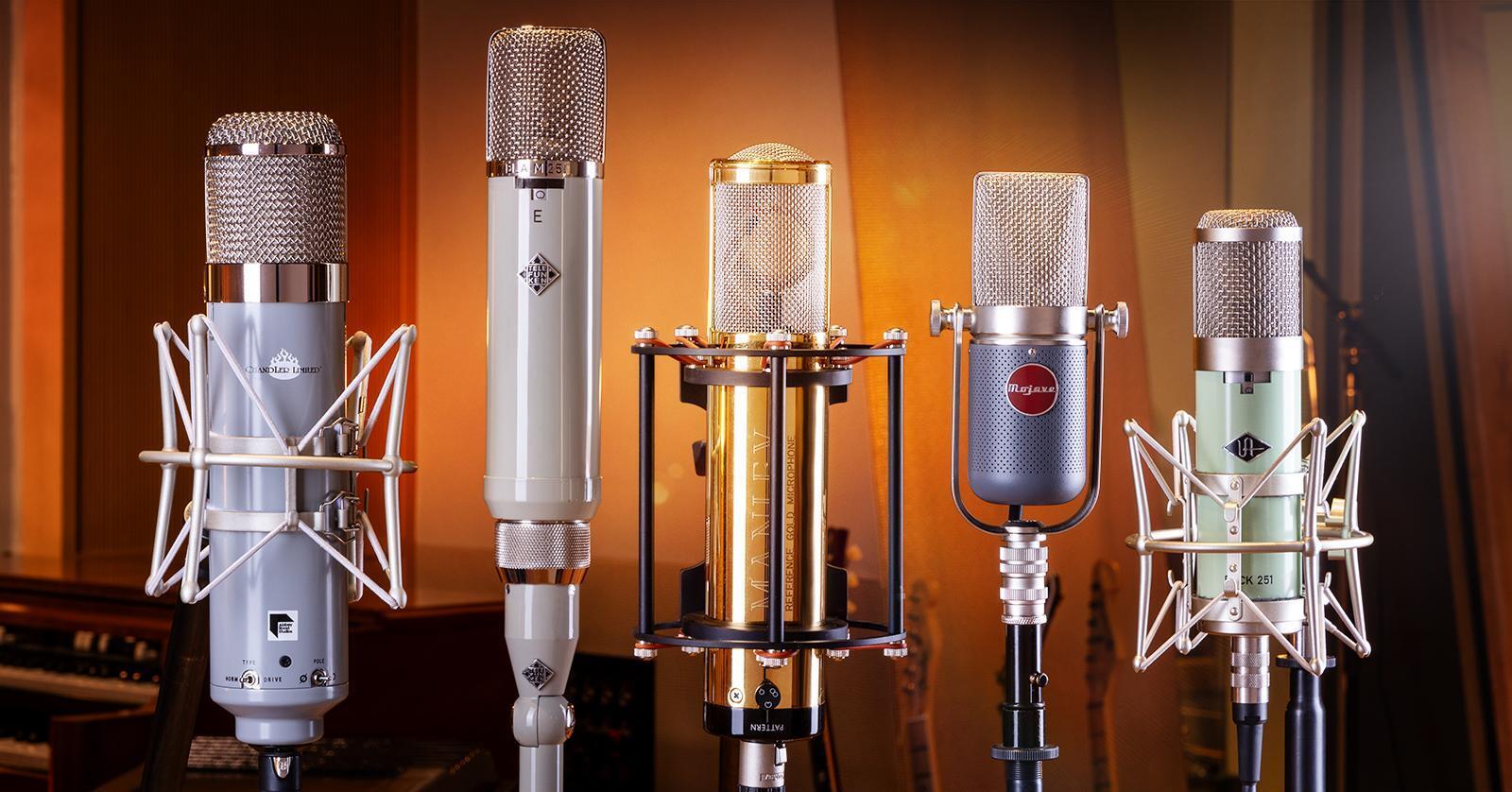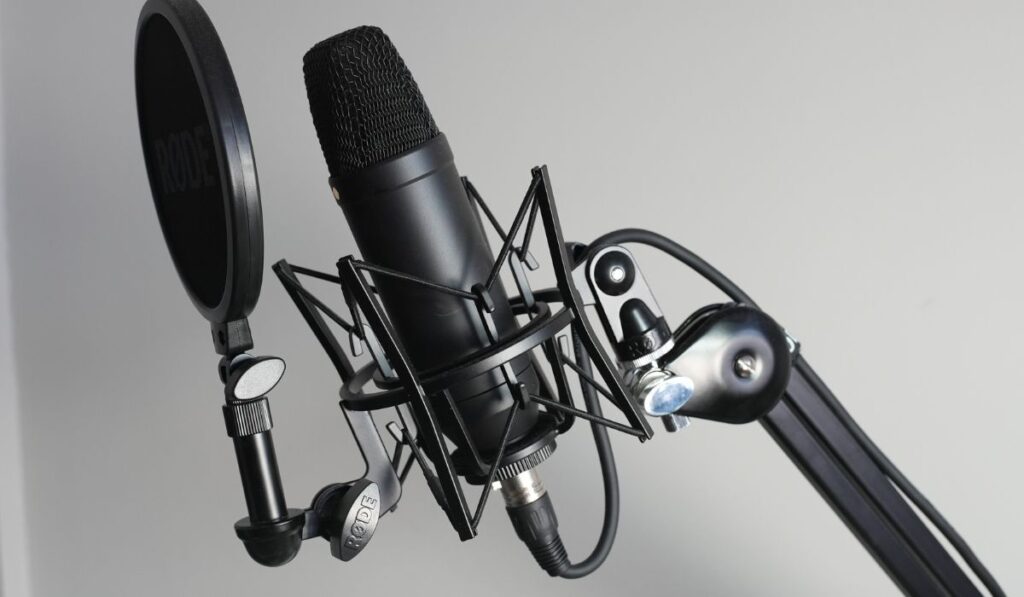Explore the mechanics of ‘Condenser Microphone Works.’ Uncover the secrets behind crystal-clear sound, elevating your recording experience with precision and clarity.
A condenser microphone converts sound waves into electrical signals using a thin diaphragm and a charged plate. A condenser microphone is a type of microphone that uses a diaphragm and a charged plate to convert sound waves into electrical signals.
When sound waves hit the diaphragm, they vibrate, causing the distance between it and the plate to change. This change in length creates variations in the electrical capacitance, which generates an electrical signal. The electrical signal is amplified and processed to produce the desired audio output.
Condenser microphones are known for their high sensitivity and ability to capture subtle details in sound accurately. They are commonly used in professional recording studios, broadcasting, and live performances.
- The Basics Of Condenser Microphone Works
- How Does A Condenser Microphone Produce Sound?
- Key Advantages And Applications Of Condenser Microphones
- Common Challenges And Limitations Of Condenser Microphones
- Types Of Condenser Microphones
- Maintenance And Care For Condenser Microphones
- Frequently Asked Questions Of How Does A Condenser Microphone Work
- Conclusion
The Basics Of Condenser Microphone Works
A condenser microphone is a type of microphone that uses a condenser (or capacitor) to convert sound into an electrical signal. It is widely used in professional audio recording and broadcasting due to its high sound quality and sensitivity.
A condenser microphone has two main components – a diaphragm and a backplate. The diaphragm is a thin, conductive membrane that vibrates in response to sound waves, while the backplate is a metal disk charged with a constant electrical voltage.
When sound waves hit the diaphragm, it moves back and forth, causing the distance between the diaphragm and the backplate to vary. The electrical capacitance between the diaphragm and backplate changes as the distance changes. This variation in capacitance leads to the modulation of an electrical signal, which is then amplified and recorded.
| Advantages of Condenser Microphones | Disadvantages of Condenser Microphones |
|
|
Overall, condenser microphones offer exceptional sound quality and are favored in professional recording and broadcasting applications where accuracy and clarity are essential.

Credit: www.nytimes.com
How Does A Condenser Microphone Produce Sound?
Condenser microphones are famous for audio recording and broadcasting due to their high sensitivity and accurate sound reproduction. These microphones work based on the principle of electrostatics. Inside the microphone is a diaphragm, a thin and flexible metal or plastic membrane that vibrates when sound waves hit it. The diaphragm acts as one plate of a capacitor, and the backplate, located at a fixed distance from the diaphragm, serves as the other plate.
When sound waves cause the diaphragm to vibrate, the distance between the plates changes, resulting in a change in capacitance. This variation in capacitance generates an electrical signal that mirrors the sound waves. Through the Phantom Power, an external power supply, the diaphragm is charged, allowing it to capture subtle vibrations and nuances in sound. This creates a detailed audio signal that can be amplified and recorded.
In summary, a condenser microphone produces sound by converting the mechanical vibrations of the diaphragm into electrical signals using the principle of electrostatics and the interaction between the diaphragm and the backplate. This allows for accurate and high-quality sound reproduction in various applications.
Key Advantages And Applications Of Condenser Microphones
Condenser microphones are highly popular in the recording industry due to their sensitivity and accuracy. These microphones use a thin diaphragm that vibrates when sound waves hit it, converting the sound into an electrical signal. The diaphragm is connected to a backplate through a small gap filled with an insulating material. When the diaphragm moves, the distance between the diaphragm and the backplate changes, creating a change in capacitance and generating an electrical charge.
One of the critical advantages of condenser microphones is their versatility in recording scenarios. They can capture high-frequency details, making them suitable for capturing vocals, acoustic instruments, and studio recordings. Due to their higher sensitivity, condenser microphones are also preferred for capturing soft sounds without distortion.
Condenser microphones are ideal for various applications, such as studio recording, podcasting, broadcasting, and live performances. Their ability to accurately reproduce sound makes them a popular choice amongst professionals in the audio industry. Moreover, these microphones are available in various sizes and designs, catering to different recording needs.

Credit: www.sweetwater.com
Common Challenges And Limitations Of Condenser Microphones
Condenser microphones are widely used in various settings due to their high-quality sound capture capabilities. However, they come with some common challenges and limitations that users should know.
Power requirements: One challenge is that condenser microphones need an external power source. They require phantom power from a mixer or audio interface, which can limit their use in certain situations where power is not readily available.
Susceptibility to handling noise: Another limitation is their sensitivity to handling noise. Condenser microphones are more prone to picking up vibrations and movements, making them less suitable for live performances or where the microphone needs to be moved frequently.
Cost considerations: Lastly, cost can be a limitation for some users. Condenser microphones, especially high-end models, can be more expensive than dynamic microphones. This cost may not be feasible for those on a tight budget or those who do not require the extra sensitivity and accuracy provided by condenser microphones.
Types Of Condenser Microphones
Due to its high sensitivity and comprehensive frequency response, a condenser microphone is famous for recording vocals, music, and live performances. There are three main types of condenser microphones:
| Large Diaphragm Condenser Microphones | Small Diaphragm Condenser Microphones | Electret Condenser Microphones |
|---|---|---|
| Large-diaphragm condenser microphones are known for their warm and rich sound. They have a larger diaphragm, typically around 1 inch in diameter, which captures more low-frequency information and creates a smoother sound. | Small diaphragm condenser microphones have a smaller diaphragm, usually around 0.5 inches in diameter. They are commonly used to record acoustic instruments like guitars, pianos, and overhead drum miking. | Electret condenser microphones are compact and affordable. They have a permanently charged diaphragm, eliminating the need for external power. These microphones are often used in consumer electronics, such as smartphones and camcorders. |
Each type of condenser microphone offers unique characteristics and is suitable for different recording applications. Whether you’re a professional musician or a casual content creator, understanding the various types of condenser microphones can help you decide when to choose the right microphone for your needs.

Credit: www.sweetwater.com
Maintenance And Care For Condenser Microphones
Condenser microphones are delicate and require proper maintenance and care to ensure optimal performance and longevity. Cleaning and handling precautions are essential to keep condenser microphones in top condition. Regular cleaning helps remove dust, dirt, and other particles that can affect the microphone’s performance. Handle the microphone carefully, avoiding sudden movements that may cause damage. Store condenser microphones in a dedicated case or protective cover to protect them from moisture, dust, and physical damage. Use a padded bag or case for added protection when transporting the microphone.
Periodic checks and maintenance are essential to identify and address any issues promptly. Inspect the microphone regularly for wear, loose connections, or damage. Clean the microphone’s grille, body, and connectors using a soft cloth and mild cleaning solution. Avoid using abrasive materials or harsh chemicals that can damage the microphone. It is also recommended to consult the manufacturer’s guidelines for specific maintenance instructions for your condenser microphone model.
Frequently Asked Questions Of How Does A Condenser Microphone Work
How Does A Condenser Microphone Pick Up Sound?
A condenser microphone picks up sound vibrations through a thin diaphragm that converts them into electrical signals. These signals are then amplified and transmitted as audio.
What Disadvantage Does A Condenser Microphone Have?
Condenser microphones have the disadvantage of being more delicate and sensitive to handling noise.
What Is The Advantage Of A Condenser Microphone?
A condenser microphone offers the advantage of high sensitivity and accurate sound reproduction. It captures detailed audio clearly, making it ideal for professional recording and broadcasting. Its design allows for a broader frequency response and better transient response than dynamic microphones.
What Do You Need To Set Up A Condenser Mic?
You’ll need a compatible audio interface or mixer, XLR cables, a microphone stand or shock mount, and a pop filter or windscreen to set up a condenser mic. Connect the mic to the audio interface or mixer using XLR cables, mount it securely, and use a pop filter to reduce plosive sounds.
Conclusion
The condenser microphone is a remarkable piece of audio equipment that uses the principles of vibration and capacitance to capture sound. This blog post explains that the condenser microphone consists of a diaphragm, a backplate, and an electrical charge, all working together to convert sound waves into electrical signals.
Its sensitivity and ability to capture fine details make it popular for professional recording and broadcasting. They understand how a condenser microphone works, which can significantly enhance appreciation for the intricate technology behind high-quality sound reproduction.

